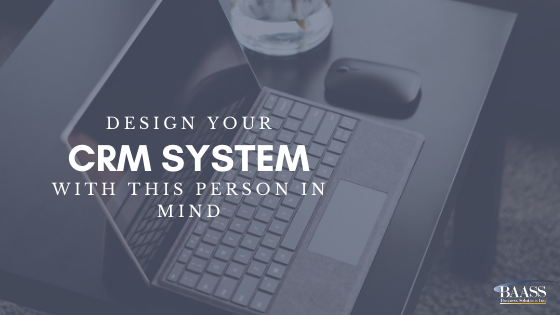
Determining the priorities among the many competing interests and ideas for your new CRM system can be challenging. Choosing standard or custom reports, determining which actions move to the front dashboard and which remain as dropdowns, it’s a never-ending list of choices that, in the end, will make your CRM system uniquely yours.
So how do you determine the priorities with your new CRM system? Who gets to decide which customization is important and which standard features suffice?
The answer may surprise you.
It’s not the CEO, the CIO, or the CMO. It’s neither the sales nor the marketing department.
No, you should design and prioritize the features of your new CRM system with the end-user in mind. And that’s YOU and the team who will actually be using the system!
Design with Your Team in Mind
There are specific steps that you can take to design with your team in mind.
- Group the specific functions used most often in a prominent place, such as the home page of your dashboard.
- Add shortcuts and other quick-access features to elements that your team uses most frequently.
- Use a simple, consistent naming structure for data fields that makes sense to most users in your company.
- Start with a small group of reports - you can always add more later.
- Schedule a check-in within six months of implementation to ensure that the way the system is currently structured works for many users. If what you have now isn’t working out for most people, decide which changes you can implement.
Use Role-Based Security
Another item to explore is role-based security. This feature offers access to specific functions based on an employee’s role. Role-based security can be used to ensure data integrity, such as limiting those with input or change-level access to those who are trained in the proper methods of adding data to the system.
Train with the End-User in Mind
Employees using the CRM system have different training needs. Matching training needs with job functions can help ensure that people are trained in the information they need to know without bogging them down with excess details.
End-user training should focus on the specific functions and features of the CRM system that someone will use. For example, the marketing department may need in-depth training on the social media tools, email blasts, and other communications tools in the CRM system.
The customer service department may need to understand how to quickly access and review customer data while they’re on a call with a customer. Each group has their own needs, and their training should be tailored to those needs.
Watch out for these 6 Common CRM Mistakes!
Who’s Your Customer?
You’ll often hear the saying, “Who’s your customer” in business. It’s a query designed to get business owners thinking about their end customer - the one who pays their bills through patronizing their services. But when it comes to a CRM system, the customer is your employees. Tailoring your CRM to their needs helps support your business goals by making their work easier and more efficient.
Blog: Your Guide to an Effective CRM Process
BAASS Business Solutions
BAASS Business Solutions can help you find and implement a CRM system that’s suited to your company’s unique needs. We’ll work with you to find a system that meets the needs of your end-users; your company’s employees. Please contact BAASS Business Solutions at 1-888-650-5544.
